Rank Species | Genus Galium Higher classification Galium | |
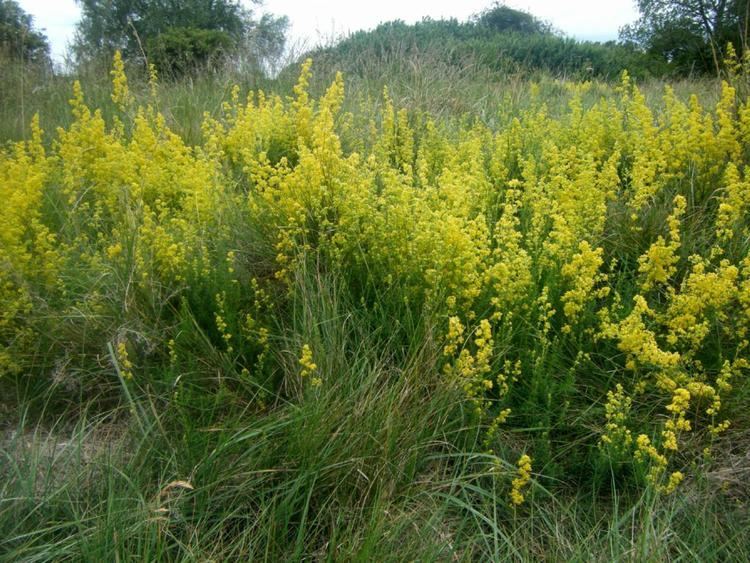 | ||
Similar Galium, Cleavers, Galium mollugo, Silverweed Cinquefoil, Sweetscented bedstraw | ||
Lady s bedstraw galium verum yellow bedstraw 2012 06 17
Galium verum (lady's bedstraw or yellow bedstraw) is a herbaceous perennial plant of the family Rubiaceae. It is widespread across most of Europe, North Africa, and temperate Asia from Israel and Turkey to Japan and Kamchatka. It is naturalized in Tasmania, New Zealand, Canada, and the northern half of the United States. It is considered a noxious weed in some places.
Contents
Galium verum is a low scrambling plant, with the stems growing to 60–120 centimetres (24–47 in) long, frequently rooting where they touch the ground. The leaves are 1–3 cm (0.39–1.18 in) long and 2 millimetres (0.079 in) broad, shiny dark green, hairy underneath, borne in whorls of 8–12. The flowers are 2–3 mm (0.079–0.118 in) in diameter, yellow, and produced in dense clusters. This species is sometimes confused with Galium odoratum, a species with traditional culinary uses.
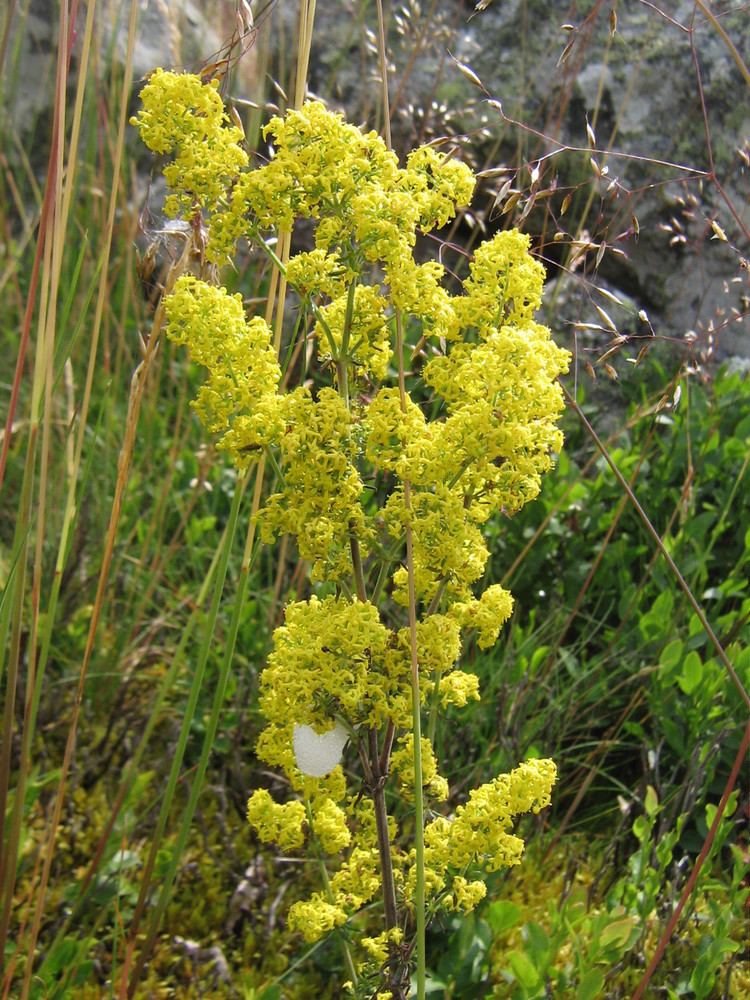
Uses
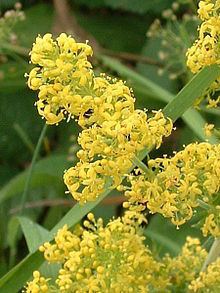
In the past, the dried plants were used to stuff mattresses, as the coumarin scent of the plants acts as a flea repellant. The flowers were also used to coagulate milk in cheese manufacture and, in Gloucestershire, to colour the cheese double Gloucester. The plant is also used to make red madder-like and yellow dyes. In Denmark, the plant (known locally as gul snerre) is traditionally used to infuse spirits, making the uniquely Danish drink bjæsk.
Mythology
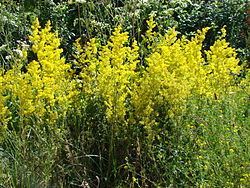
Frigg was the goddess of married women, in Norse mythology. She helped women give birth to children, and as Scandinavians used the plant lady's bedstraw (Galium verum) as a sedative, they called it Frigg's grass.
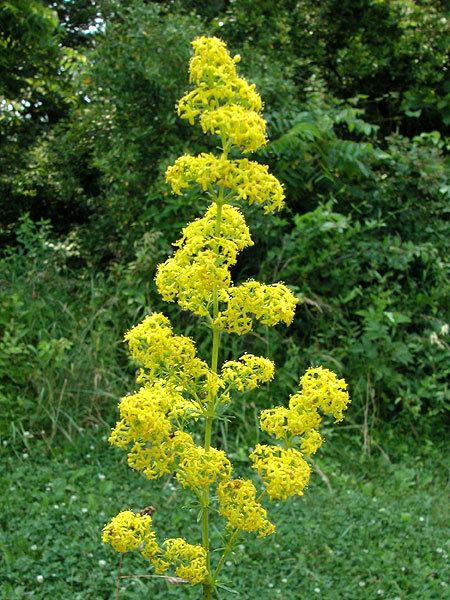
In Romanian folklore, it is called sânziana and it is linked to the Sânziene fairies and their festival on June 24.
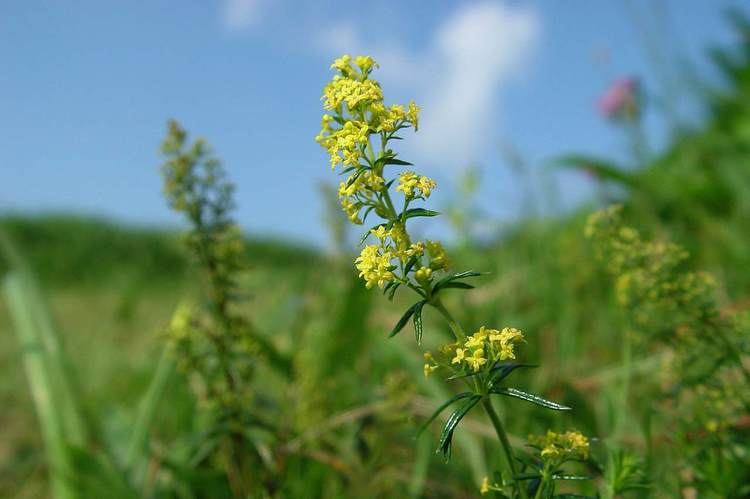
In Celtic mythology, the hero Cú Chulainn, who suffered fits of rage during battle, would take a tea of this plant to calm his frenzy. The plant is known as Lus Chù Chulainn in Scottish Gaelic.
Subspecies
Many varietal and subspecific names have been proposed, but only four are currently (May 2014) recognized:
